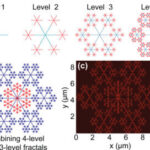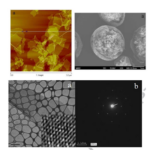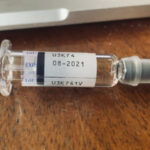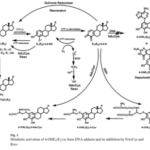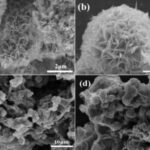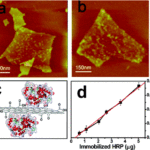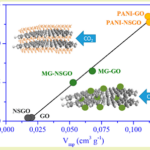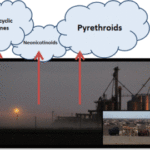November 16, 2024 Chemtrails, Global Warming, Graphene, Scientific alternative studies
Science is the search for truth.
But truth is not absolute certainty.
Solar geoengineering and the role of aerogels: injection of graphene-based aerosols into the atmosphere
Reference study
Vukajlovic, J.; Wang, J.; Forbes, I..; Ciller, L. (2021). Diamond-doped silica aerogel for solar geoengineering. Diamond and Related Materials, 108474. https://doi.org/10.1016/j.diamond.2021.108474
After analyzing the CO2 absorption capacity of graphene oxide, its impact on ice nucleation in the atmosphere, and its most likely dispersion in aircraft combustion gases, it is evident that condensation effects caused by jet turbines generate water vapor, seed clouds, and most likely contaminate with soot residue and graphene oxide, which would also explain the presence of graphene oxide in rainwater.
Further research is underway to determine the relationship between graphene oxide and aerosol injection into the atmosphere.
Considering that “GO” graphene oxide has properties that allow it to adsorb CO2, it seems logical to diffuse it into the atmosphere to counteract the greenhouse effect and, at the same time, to create clouds that would, on the one hand, cause a cooling of the temperature and, on the other hand, precipitation that would reach the groundwater.
In short, the goal of so-called climate control or climate geoengineering.
For this reason, a search of the available scientific literature dealing with geoengineering techniques using graphene “G” or graphene oxide “GO” was initiated.
A general web search revealed some very shocking news that had gone unnoticed for so many years.
This is a “hypothetical” geoengineering project to combat climate change (Berardelli, J. 2018).
In this regard, it is very interesting to read the scientific article by Smith and Wagner (2018), which proposes the use of “a fleet of 100 aircraft that could fly 4,000 missions a year around the world and help save the planet from climate change.
These would be planes that would spray tiny sulfate particles into the lower stratosphere, about 60,000 feet above sea level.
The idea is to help protect our planet from enough sunlight to keep temperatures down“.
A cost study is also one of the objectives of the article : “The researchers examined how practical and expensive it would be to launch a hypothetical solar geoengineering project 15 years from now“.
It is at this point that the term “solar geoengineering” is used for the first time, which means nothing more than climate intervention through the release of nanoparticles into the atmosphere to reduce the incidence of solar radiation, avoiding the solar refraction effect already mentioned in the Bill Gates-funded SCoPEX project (Figueroa, A. 2021 | Neslen, A. 2017).
This is a fool’s errand, because releasing nanoparticles into the atmosphere to mitigate global warming is not only a direct intervention in natural climate processes, but may also have unpredictable consequences.
In fact, as Moreno-Cruz and Keith (2013) state, “Uncertainty about solar radiation management (SRM) projects is high, and managers must decide whether to engage in research that can reduce this uncertainty“.
In other words, researchers do not know the effects of solar geoengineering, but they point out that it is a quick and cheap solution to combat climate change.
As evidence, the following words can be quoted : “Solar radiation management (SRM) has two characteristics that make it useful for climate risk management : it is fast and inexpensive.
We introduce SRM into a simple economic model of climate change designed to explore the interaction between uncertainty in the climate response to CO2 risks and SRM in the face of carbon cycle inertia“.
Finally, it is stated that “SRM is valuable for climate risk management not because of its low cost, but because it can be implemented quickly in the event of high climate impacts, such as in a climate emergency situation“.
This suggests that researchers are proposing research and testing of solar geoengineering without knowing the adverse effects it might cause, but relying on cost-benefit estimates and without scientific evidence.
Interestingly, seven years later, some issues such as the possibility that “solar geoengineering causes excessive cooling” (Abatayo, AL; Bosetti, V.; Casari, M.; Ghidoni, R.; Tavoni, M., 2020) are still mentioned.
The authors state that the use of this technology allows countries to unilaterally influence the global temperature.
Solar geoengineering could trigger conflicting interventions by countries that want different temperatures ; economic theory suggests that countries that want a cooler climate could impose it on others.
Other countries may respond with “counter-geoengineering” interventions.
Interestingly, many authors take for granted the ability to infer climate through solar geoengineering and shift the debate to geopolitical issues such as “global governance”, see (McLaren, D. 2021; Reynolds, J.L. 2019; Jinnah, S. Nicholson, S. Flegal, J. 2018; Bunn, M. 2019; Lloyd, I.D.; Oppenheimer, M. 2014); Corry, O. 2021 | Reynolds, JL 2019 | Jinnah, S.; Nicholson, S.; Flegal, J. 2018 | Bunn, M. 2019 | Lloyd, ID; Oppenheimer, M. 2014) searchable by queries such as “solar geoengineering” or “governance”.
Facts analyzed
The researchers (Vukajlovic, J.; Wang, J.; Forbes, I.; Šiller, L., 2021) assume in their theoretical study that aerosol injection into the solar stratosphere is developed to reduce the incidence of solar radiation.
For this purpose, sulfate aerosols were used, which, however, have the disadvantage of depleting the ozone layer and acting as a source of absorption of infrared radiation.
These concepts are explained as follows : “Although aerosol injection into the stratosphere is one of the most promising solar geoengineering techniques, the sulfate aerosols proposed for such application have significant drawbacks such as infrared (IR) absorption and ozone depletion.
There is a need to develop new materials for such application that exhibit substantial upward diffusion and non-IR absorption to enable a cooling effect“.
This statement also assumes that solar geoengineering also has the goal of reducing temperature or producing a cooling effect, so this methodology fits into the context of combating climate change.
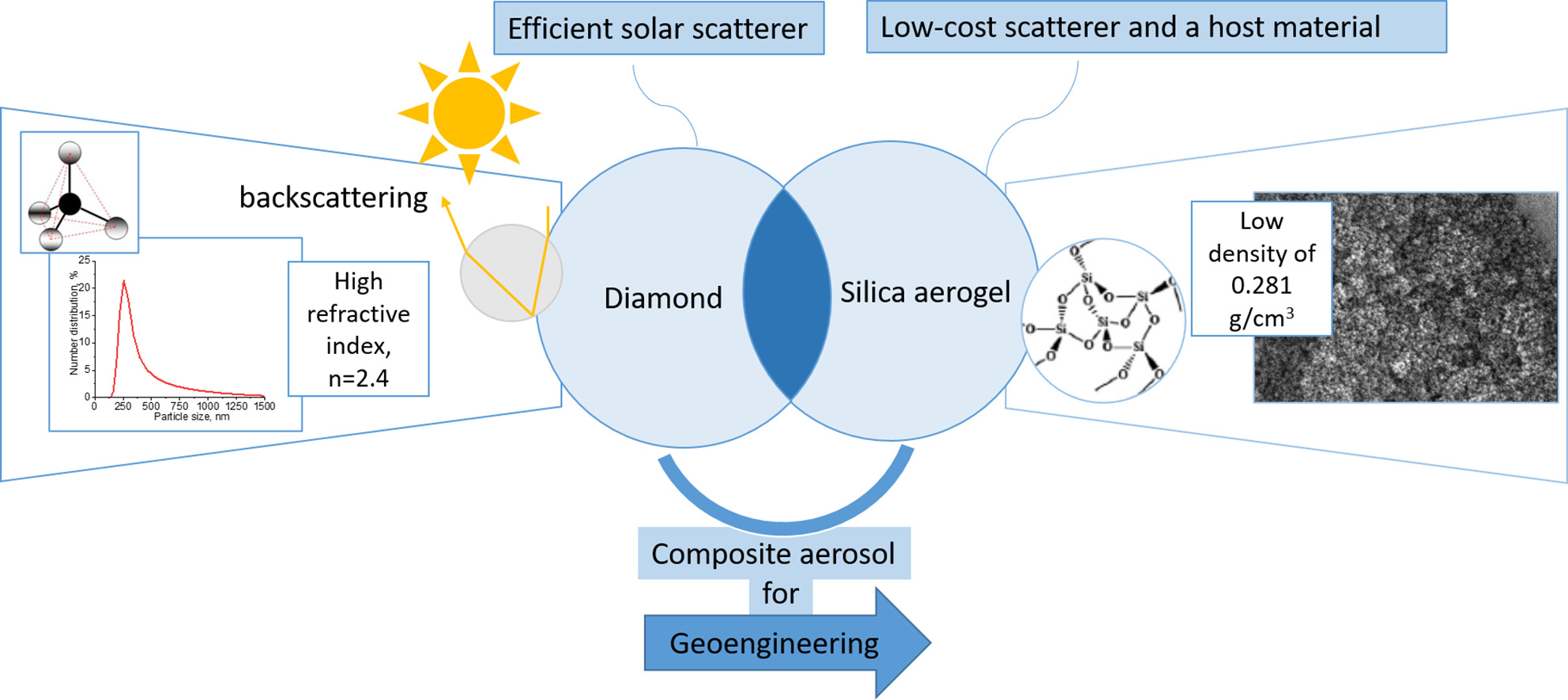
The type of compound they propose in their aerosol injection projects is a highly porous silica aerogel (a property also shared with graphene oxide), which also allows the diffusion of diamond nanoparticles.
This would give the material diffuse reflectivity, or the ability to reduce or reflect solar radiation.
In addition, the authors acknowledge that other aerogels could be used for such purposes, in particular graphene aerogel.
This statement is worded as follows : “Structures composed of silica aerogel with different carbon nanostructures in the form of nanotubes, nanofibers and graphene have also been developed (Lamy-Mendes, A.; Silva, RF; Durães, L. 2018).
In addition, PM2.5 particles (particles smaller than 2.5 μm) are considered harmful to humans when inhaled.
Therefore, it is suggested that aerosol particles should be in the size range of ~0.1 to 1 μm to minimize health risks“.
This last sentence is very interesting because it means that the authors are aware of the health risks associated with the use of graphene oxide in humans.
However, they still recommend a nanoparticle size in the range of 0.1-1 μm, which are in fact easily inhaled by passing the barrier of any type of mask, including nuclear masks (Sharma, S.; Pinto, R.; Saha, A.; Chaudhuri, S.; Basu, S. 2021).
The details of using graphene oxide as a component to make silica aerogel is also worth investigating.
The authors cite the article by Lamy-Mendes, A., Silva, R. F., and Durães, L. (2018), which analyzes other possible carbon-derived nanomaterials, including “carbon nanotubes, carbon nanofibers, graphene, and carbon aerogel“.
The 70-plus page report consists of a section that specifically addresses graphene and graphene oxide aerogel, stating that “the use of graphene oxide (GO) is justified by the fact that, unlike bare surface graphene, it has a large number of oxygen-containing groups (e.g., epoxy and hydroxyl groups) that improve both the solubility of graphene in solvents and the interaction with the silica network“.
This means that graphene oxide is a suitable material for the production of aerogels for solar geoengineering.
In fact, in their conclusions (Lamy-Mendes, A.; Silva, RF; Durães, L., 2018), the authors indicate that “although silica aerogels have exceptional properties, such as low bulk density and thermal conductivity, as well as high specific surface area, an effort has been made in the last decade to obtain materials with distinctive characteristics compared to native silica aerogels.
Various strategies for modifying aerogels have already been investigated, with the addition of particles, polymers, or fibers as possible additives to provide and/or improve various properties of silica aerogels.
As reported in this review, a new approach has been developed to modify these aerogels by inserting carbon nanostructures, such as carbon nanotubes, carbon nanofibers, graphene, and carbon aerogels“.
This shows that graphene oxide can be used in the injection of aerosols into the atmosphere for solar geoengineering purposes.
This assertion is also shared by Qu, ZB; Feng, WJ; Wang, Y.; Romanenko, F. and Kotov, NA (2020), who point out that graphene nanosheets, known as “GQDs” (graphene quantum dots), can be used in solar geoengineering, probably also due to the optical reflection properties of graphene oxide in photonic silica crystals (Lee, CH; Yu, J. ; Wang, Y.; Tang, AYL; Kan, CW; Xin, JH 2018), depending on the aerogel material they refer to (Vukajlovic, J.; Wang, J.; Forbes, I.; Šiller, L. 2021).
Graphene oxide and Fe3O4 aerogel
Before starting this part of the analysis, it is worth mentioning that iron oxide (Fe3O4), also known as magnetite, is one of the materials most often combined with graphene oxide because of its versatility.
For example :
Graphene oxide-Fe3O4 nanoparticles exhibit electromagnetic absorption properties (Ma, E.; Li, J.; Zhao, N.; Liu, E.; He, C.; Shi, C., 2013) ;
Superparamagnetic graphene oxide-Fe3O4 nanoparticles for drug, biocide, fertilizer and pesticide delivery (Yang, X.; Zhang, X.; Ma, Y.; Huang, Y.; Wang, Y.; Chen, Y. 2009 |CN112079672A.) 2020) ;DNA vaccine delivery for experimental cancer treatments and gene therapies (Shah, MAA; He, N.; Li, Z.; Ali, Z.; Zhang, L. 2014; Hoseini-Ghahfarokhi, M.; Mirkiani, S.; Mozaffari, N.; Sadatlu, MAA; Ghasemi, A.; Abbaspour, S.; Karimi, M. 2020);
Other cancer treatments based on platinum-based therapies (Yang, YF; Meng, FY; Li, XH; Wu, NN; Deng, YH; Wei, LY; Zeng, XP, 2019).Magnetic nanoparticle-based cancer therapy (Zhang, H.; Liu, XL; Zhang, YF; Gao, F.; Li, GL; He, Y.; Fan, HM, 2018);
Extraction of ibuprofen, phenol, bisphenol A, methylparaben and propylparaben from blood (Yuvali, D., Narin, I., Soylak, M. and Yilmaz, E., 2020; Abdolmohammad-Zadeh, H. and Zamani, A., 2020);Neuromodulation and treatments for neurodegenerative diseases and psychiatric disorders (Owonubi, SJ; Aderibigbe, BA; Fasiku, VO; Mukwevho, E.; Sadiku, ER 2019);
Many other examples can be found in the scientific literature, see “Fe3O4-graphene oxide” or “graphene oxide”, “Fe3O4”.
Magnetic Fe₃O₄ nanocomposites with graphene oxide GO have been known since at least 2010, when they were mentioned as a possible biomarker for cancer detection (Swami, M. 2010).
Their preparation method was the subject of the article by Cao, L.L.; Yin, S.M.; Liang, Y.B.; Zhu, J.M.; Fang, C.; Chen, Z.C. (2015), in which their magnetic properties, ability to generate magnetic fields, zeta potential, and ability to cross the blood-brain barrier were discovered.
In addition to being highly stable over a wide pH range, these nanocomposites also show the ability to separate Fe3O4 from graphene oxide by applying an external magnetic field.
These properties could explain the magnetic phenomenon of the so-called “vaccines” against COVID-19, presumably composed of graphene oxide and magnetite, as reported in the study by Campra P. (2021).
Before studying aerogels, it is necessary to define the concept.
An aerogel is an ultralight, porous, gel-based material whose properties prevent it from collapsing, with a density slightly higher than that of air.
Secondly, it can be noted that aerogels of graphene oxide and Fe3O4 exist, as shown in the study by Kopuklu, B.B., Tasdemir, A., Gursel, S.A. and Yurum, A. (2021).
Here, the research adapts its use to develop batteries with superior performance to lithium-ion technology.
Graphene oxide aerogels and Fe3O4 magnetite are also developed as magnetic actuators by coating them with polydopamine (Scheibe, B. ; Mrówczyński, R. ; Michalak, N. ; Załęski, K. ; Matczak, M. ; Kempiński, M. ; Stobiecki, F. 2018).
Polydopamine, also known as PDA, is a polymer derived from the oxidation of dopamine and, according to Liebscher (J. 2019), is commonly used in “various applications in biology, biomedicine, membranes, catalysis, materials, and water purification”.
This detail is very interesting because polydopamine is not only a chemical compound, but also a neurotransmitter that is essential for the proper functioning of the human brain and, in particular, the central nervous system, the so-called reward system (craving, pleasure, conditioning), addiction to any substance, or the will to socialize.
It is important to remember that the absence of dopamine can cause psychiatric diseases and disorders such as depression (Moghaddam, B. 2002) and even neurodegenerative disorders (David, R. et al., 2008).
Final thoughts
Injection of graphene oxide-based aerosol/aerogel into the atmosphere has now been demonstrated for solar and climatological geoengineering.
As reported by the researchers in the article (Vukajlovic, J .; Wang, J .; Forbes, I .; Šiller, L. 2021), aerosol injection has been developed and experimented for years, as shown in (Cao, L. 2019 | Zhao, L.; Yang, Y.; Cheng, W.; Ji, D.; Moore, JC 2017 | Dykema, JA; Keith, DW; Anderson, JG; Weisenstein, D. 2014 | Keith, D. ; Dykema, J. A.; Keutsch, F. N., 2017).
All these elements confirm once again that the phenomenon of chemtrails exists and can indeed be assimilated with solar and climate geoengineering projects.
According to the scientific information analyzed, the release of graphene oxide or its derivatives in the form of aerosols into the atmosphere is dangerous because :
a) It is a source of pollution that affects the atmosphere, land, oceans and seas, agriculture, food, water sources, animals and people who end up breathing polluted air.
(b) Causing adverse effects and damage that may be fatal to human health.
(c) Alter the climate and cause effects of atmospheric drying, ozone depletion (Weisenstein, DK; Keith, DW; Dykema, JA 2015), and other side effects that have not yet been fully scientifically proven.
Aerosol injection as part of the solar geoengineering process can be implemented worldwide without any prior public consultation, without the due debate and open scientific analysis that an issue as relevant as possible climate change deserves.
In this sense, Parker and Irvine (2018) explain that once solar geoengineering experiments are started, there is no going back, as the consequences of stopping them would cause even greater risks.
In their summary, the authors state, “If solar geoengineering were implemented and then suddenly stopped, there would be a rapid and damaging rise in temperatures. This effect is often called a termination shock and is a fundamental concept“.
The authors clarify that depending on the methodology and model of solar geoengineering, as well as the number of countries involved, the effects of climate change, especially climate disasters, could be mitigated, but they do not address whether solar geoengineering itself could be the cause of these disasters.
Other authors, including Kravitz, B., and MacMartin, D.G., Robock, A., Rasch, P.J., Ricke, K.L., Cole, J.N., and Yoon, J.H. (2014), state in their conclusions that “there are many other effects that could be included in regional studies of solar geoengineering.
These include other climate effects, such as changes in the occurrence of extreme events.
However, the injection of stratospheric sulfate aerosols may increase ozone depletion and have other dynamic effects that could in turn affect local temperature and precipitation patterns that are distinct from the geoengineering effects of partial solar shading.
We recognize that terrestrial plant health does not depend solely on changes in precipitation and temperature.
Future assessments of hydrological changes due to geoengineering could also include changes in evaporation, soil moisture, and runoff“.
After analyzing what is presented in this paper, there is no longer any doubt that researchers are conducting in-depth studies on solar geoengineering, its models, its application and prediction methods, and the injection of aerosols into the atmosphere/stratosphere at a height of 7 to 18 km.
Indeed, according to a study by Horton, JB; Keith, DW; Honegger, M. (2016) on the implications of the Paris Agreement for CO2 reduction and solar geoengineering, “SRM is an adjunct to CO2 mitigation“, adding that “decades of SRM [solar radiation management] analysis have consistently shown that it can lower surface temperatures, but there is great uncertainty about its ability to slow regional climate change and its effects on other important variables such as precipitation, sea level rise, and extreme events“.
Regarding implementation options, the study states that “it appears that some forms of SRM could be implemented at very low cost (less than 0.1 percent of world GDP) using existing technologies“, but without clarifying or specifying what those forms are.
The article is particularly relevant for understanding the geopolitical framework in which, as of 2016, solar geoengineering and the injection of graphene oxide aerosols into the atmosphere are framed.
These activities have resulted in an agreement (not publicly disclosed) for the use of SRM technologies.
The use of SRM (at least experimentally) is known from articles reporting its effects, such as those cited below : (Malik, A.; Nowack, PJ; Haigh, JD; Cao, L.; Atique, L.; Plancherel, Y. 2019 | Kim, DH; Shin, HJ; Chung, IU 2020).
Given the possibilities and geopolitical aspects of climate control, solar geoengineering can be seen as a military weapon, as suggested by Bunn (2019).
Thus, it seems clear that the fight against climate change is not what it seems, but rather a veiled war between political blocs, scientific half-truths, misinformation, and opacity to establish a single world government that is not democratically elected and has no legitimacy.
Indeed, climate control raises troubling questions : “Who decides or dictates the world’s climate ? Under what ethics are decisions about climate change made ? By what right is climate change intended ? And with what consequences, at what cost, and for what purpose” (McLaren, DP 2018) are some pertinent questions that should be asked.
Playing with what you do not understand can often have unpredictable and almost always catastrophic consequences.
Finally, it is worth commenting briefly on the article by (Buck, Geden, Sugiyama, and Corry 2020), in which they present the COVID-19 emergency response as an example of the implementation of solar geoengineering to justify the injection of stratospheric aerosols.
To this end, the authors identify five lessons to be learned :
a) Narrow metrics seem easy to use, but can actually create new problems.
b) Global governance is fragmented or absent.
c) Media technologies create new instabilities for science and politics.
d) Politicians may act for the sake of acting, or worse.
e) The goal is to buy time with only one plan in hand.
These mistakes seem to be ones that the authors believe cannot be made in the next “pandemic” challenge, so anticipatory research is needed, as reflected in the following words : “COVID-19 was a stress test for the interactions between science, media, and policy, both nationally and globally, and revealed complex and potentially damaging dynamics in the linkages between these spheres.
The pandemic response underscores the need for proactive governance, but also for proactive transdisciplinary research prior to a real e-emergency“.
Thus, there seems to be a very close link between the emergency management of COVID-19 and a “coming” climate pandemic.
Will solar geoengineering be the next pandemic on the global agenda?
References
1.Abatayo, AL; Bosetti, V.; Casari, M.; Ghidoni, R.; Tavoni, M. (2020). Solar geoengineering may lead to excessive cooling and high strategic uncertainty. Proceedings of the National Academy of Sciences, 117 (24), pp. 13393-13398. https://doi.org/10.1073/pnas.1916637117
2.Abdolmohammad-Zadeh, H.; Zamani, A.; Shamsi, Z. (2020). Extraction of four endocrine-disrupting chemicals using a Fe3O4/graphene oxide/di-(2-ethylhexyl) phosphoric acid nano-composite, and their quantification by HPLC-UV. Microchemical Journal,, 157, 104964. https://doi.org/10.1016/j.microc.2020.104964
3.Berardelli, J. (2018). Controversial spraying method aims to curb global warming. CBSnews. https://www.cbsnews.com/news/geoengineering-treatment-stospheric-aerosol-injection-climate-change-study-today-2018-11-23/
4.Buck, H.; Geden, O.; Sugiyama, M.; Corry, O. (2020). Pandemic politics : lessons for solar geoengineering. Communications Earth & Environment, 1 (1), pp. 1-4. https://doi.org/10.1038/s43247-020-00018-1
5.Bunn, M. (2019). Governance of solar geoengineering : learning from nuclear regimes. Governance of the deployment of solar geoengineering, 51. https://scholar.harvard.edu/files/matthew_bunn/files/harvard_project_sg_governance-briefs_volume_feb_2019.pdf#page=57
6.Campra, P. (2021). [Relazione] Detección de óxido de grafeno en suspensión acuosa (Comirnaty™ RD1) : Estudio observacional en microscopía óptica y electrónica. Universidad de Almería. https://docdro.id/rNgtxyh
7.Cao, L. (2019). Small scale stratospheric aerosol injection experiments benefits solar geoengineering research. Chinese Science Bulletin, 64 (23), pp. 2386-2389.https://doi.org/10.1360/N972019-00300
8.Cao, LL; Yin, SM; Liang, YB; Zhu, JM; Fang, C.; Chen, ZC (2015). Preparation and characterisation of magnetic Fe3O4/graphene oxide nanocomposites. Materials Research Innovations, 19 (sup1), S1-364. https://doi.org/10.1179/1432891715Z.000000001571
9.CN112079672A. 虓; . (2020) Application of graphene aqueous dispersion in farmland water retention, fertilizer retention and bacteriostasi. https://patents.google.com/patent/CN112079672A/en
10.David, R.; Koulibaly, M.; Benoit, M.; Garcia, R.; Caci, H.; Darcourt, J.; Roberto, P. (2008). Striatal dopamine transporter levels correlate with apathy in neurodegenerative diseases : A SPECT study with partial volume effect correction. Clinical Neurology and Neurosurgery, 110 (1), pp. 19-24. https://doi.org/10.1016/j.clineuro.2007.08.007
11.Dykema, JA; Keith, DW; Anderson, JG; Weisenstein, D. (2014). Stratospheric controlled perturbation experiment : a small-scale experiment to improve understanding of the risks of solar geoengineering. Philosophical Transactions of the Royal Society A : Mathematical, Physical and Engineering Sciences, 372 (2031), 20140059. https://doi.org/10.1098/rsta.2014.0059
12.Figueroa, A. (2021). Proyecto de geoingeniería apoyado por Bill Gates podría mitigar la radiación solar. NotiPress. https://notipress.mx/tecnologia/proyecto-geoingenieria-apoyado-bill-gates-mitigar-radiacion-solar-6893
13.Freedman, A. (2013). Geoengineering Could Reduce Critical Global Rainfall. Climatecentral.org. https://www.climatecentral.org/news/geoengineering-could-cut-global-rainfall-study-finds-16699
14.Hoseini-Ghahfarokhi, M.; Mirkiani, S.; Mozaffari, N.; Sadatlu, MAA; Ghasemi, A.; Abbaspour, S.; Karimi, M. (2020). Applications of Graphene and Graphene Oxide in Smart Drug/Gene Delivery: Is the World Still Flat ? International Journal of Nanomedicine, 15, 9469.https://dx.doi.org/10.2147%2FIJN.S265876
15.Ortone, JB; Keith, DW; Honegger, M. (2016). Implications of the Paris Agreement for carbon dioxide removal and solar geoengineering. Viewpoints. Harvard Project on Climate Agreements, Cambridge, Massachusetts, USA, Cambridge, Massachusetts, USA.https://www.belfercenter.org/sites/default/files/files/publication/160700_horton-keith-honegger_vp2.pdf
16.Jinnah, S.; Nicholson, S.; Flegal, J. (2018). Toward legitimate governance of solar geoengineering research : a role for sub-state actors. Ethics, Policy & Environment, 21 (3), pp. 362-381. https://doi.org/10.1080/21550085.2018.1562526
17.Keith, D.; Dykema, JA; Keutsch, FN (2017). Stratospheric controlled perturbation experiment (SCoPEx): overview, status, and results from related laboratory experiments. En AGU Fall Meeting Abstracts (Vol. 2017, pp. GC43H-1162). https://agu.confex.com/agu/fm17/meetingapp.cgi/Paper/296867
18.Kim, DH; Shin, HJ; Chung, UI (2020). Geoengineering : Impact of Marine Cloud Brightening Control on the Extreme Temperature Change over East Asia. Atmosphere, 11 (12), 1345. https://doi.org/10.3390/atmos11121345
19.Kopuklu, BB; Tasdemir, A.; Gursel, SA; Yurum, A. (2021). High stability graphene oxide aerogel supported ultrafine Fe3O4 particles with superior performance as a Li-ion battery anode. Carbon, 174, pp. 158-172. https://doi.org/10.1016/j.carbon.2020.12.049
20.Kravitz, B.; Mac Martin, DG; Robo, A.; Rasch, PJ; Ricke, KL; Cole, JN; Yoon, JH (2014). A multi-model assessment of regional climate disparities caused by solar geoengineering. Environmental Research Letters, 9 (7), 074013. https://doi.org/10.1088/1748-9326/9/7/074013
21.Lamy-Mendes, A.; Silva, RF; Duraes, L. (2018). Advances in carbon nanostructure–silica aerogel composites : a review. Journal of Materials Chemistry A. Journal of Materials Chemistry A, 6 (4), pp. 1340-1369. https://doi.org/10.1039/C7TA08959G
22.Lee, CH; Yu, J.; Wang, Y.; Tang, AYL; Kan, CW; Xin, JH (2018). Effect of graphene oxide inclusion on the optical reflection of a silica photonic crystal film. RSC Advances, 8 (30), pp. 16593-16602. https://doi.org/10.1039/C8RA02235F
23.Lei, Y.; Hu, Z.; Cao, B.; Chen, X.; Song, H. (2017). Enhancements of thermal insulation and mechanical property of silica aerogel monoliths by mixing graphene oxide. Materials Chemistry and Physics, 187, pp. 183-190. https://doi.org/10.1016/j.matchemphys.2016.11.064
24.Liebscher, J. (2019). Chemistry of polydopamine–scope, variation, and limitation. European Journal of Organic Chemistry, 2019 (31-32), pp. 4976-4994. https://doi.org/10.1002/ejoc.201900445
25.Lloyd, ID; Oppenheimer, M. (2014). On the design of an international governance framework for geoengineering. Global Environmental Politics, 14 (2), pp. 45-63. https://doi.org/10.1162/GLEP_a_00228
26.Ma, E.; Li, J.; Zhao, N.; Liu, E.; Lui, C.; Shi, C. (2013). Preparation of reduced graphene oxide/Fe3O4 nanocomposite and its microwave electromagnetic properties. Materials Letters , 91, pp. 209-212. https://doi.org/10.1016/j.matlet.2012.09.097
27.Malik, A.; Nowack, PJ; Haigh, JD; Cao, L.; Atique, L.; Plancherel, Y. (2019). Tropical Pacific Climate Variability under Solar Geoengineering: Impacts on ENSO Extremes. Atmospheric Chemistry and Physics Discussions, 2019, pp. 1-33. https://meetingorganizer.copernicus.org/EGU2019/EGU2019-18901.pdf
28.McLaren, D.; Corry, O. (2021). The politics and governance of research into solar geoengineering. Wiley Interdisciplinary Reviews: Climate Change, 12 (3), e707. https://doi.org/10.1002/wcc.707
29.McLaren, DP (2018). Whose climate and whose ethics ? Conceptions of justice in solar geoengineering modelling. Energy Research & Social Science, 44, pp. 209-221. https://doi.org/10.1016/j.erss.2018.05.021
30.Moghaddam, B. (2002). Stress activation of glutamate neurotransmission in the prefrontal cortex : implications for dopamine-associated psychiatric disorders. Biological psychiatry, 51 (10), pp. 775-787. https://doi.org/10.1016/S0006-3223(01)01362-2
31.Moreno Cruz, JB; Keith, DW (2013). Climate Policy under Uncertainty : A Case for Solar Geoengineering, 121 (3), pp. 431-444. https://doi.org/10.1007/s10584-012-0487-4
32.Neslen, A. (2017). US scientists launch world’s largest solar geoengineering study. The Guardian. https://www.theguardian.com/environment/2017/mar/24/us-scientists-launch-worlds-biggest-solar-geoengineering-study
33.Owonubi, SJ; Aderibigbe, BA; Fasiku, VO; Mukwevho, E.; Sadiku, ER (2019). Nanocarriers for Brain Targeting. Apple Academic Press. pp. 309-330. https://doi.org/10.1201/9780429465079
34.Parker, A.; Irvine, PJ (2018). The risk of termination shock from solar geoengineering. Earth’s Future, 6 (3), pp. 456-467. https://doi.org/10.1002/2017EF000735.
35.Qu, ZB; Feng, WJ; Wang, Y.; Romanenko, F.; Kotov, NA (2020). Diverse nanoassemblies of graphene quantum dots and their mineralogical counterparts. Angewandte Chemie, 132 (22), pp. 8620-8629. https://doi.org/10.1002/ange.201908216
36.Reynolds, JL (2019). Solar geoengineering to reduce climate change : a review of governance proposals. Proceedings of the Royal Society A, 475 (2229), 20190255. https://doi.org/10.1098/rspa.2019.0255
37.Shah, MAA; He, N. .; Li, Z.; Ali, Z.; Zhang, L. (2014). Nanoparticles for DNA Vaccine Delivery. Journal of Biomedical Nanotechnology, 10 (9), pp. 2332-2349. https://doi.org/10.1166/jbn.2014.1981
38.Scheibe, B.; Mrówczyński, R.; Michalak, N.; Załęski, K.; Matczak, M.; Kempiński, M.; Stobiecki, F. (2018). Anchoring Fe3O4 nanoparticles in a reduced graphene oxide aerogel matrix via polydopamine coating. Beilstein journal of nanotechnology, 9 (1), pp. 591-601. https://doi.org/10.3762/bjnano.9.55
39.Sharma, S.; Pinto R..; Saha, A.; Chaudhuri, S.; Basu, S. (2021). On secondary atomization and blockage of surrogate cough droplets in single-and multilayer face masks. Science advances, 7 (10). https://doi.org/10.1126/sciadv.abf0452
40.Smith, W.; Wagner, G. (2018). Stratospheric aerosol injection tactics and costs in the first 15 years of deployment. Environmental Research Letters, 13 (12), 124001. https://doi.org/10.1088/1748-9326/aae98d
41.Swami, M. (2010). A discovery strategy for novel cancer biomarkers. Nature Reviews Cancer, 10 (9), pp. 597-597. https://doi.org/10.1038/nrc2922
42.Vukajlovic, J.; Wang, J.; Forbes, I.; Ciller, L. (2021). Diamond-doped silica aerogel for solar geoengineering. Diamond and Related Materials, 108474. https://doi.org/10.1016/j.diamond.2021.108474
43.Weisenstein, DK; Keith, DW; Dykema, JA (2015). Solar geo-engineering using solid aerosols in the stratosphere. Atmospheric Chemistry and Physics, 15 (20), pp. 11835-11859. https://doi.org/10.5194/acp-15-11835-2015
44.Yang, X.; Zhang, X.; Ma, Y..; Huang, Y.; Wang, Y.; Chen, Y. (2009). Superparamagnetic graphene oxide–Fe3O4 nanoparticles hybrid for controlled targeted drug carriers. Journal of materials chemistry, 19 (18), pp. 2710-2714. https://doi.org/10.1039/B821416F
45.Yang, YF; Meng, FY; Li, XH; Wu, NN; Deng, YH; Wei, LY; Zeng, XP (2019). Magnetic graphene oxide-Fe3O4-PANI nanoparticle adsorbed platinum drugs as drug delivery systems for cancer therapy. Journal of nanoscience and nanotechnology, 19 (12), pp. 7517-7525. https://doi.org/10.1166/jnn.2019.16768
46.Yuvali, D.; Narin, I.; Soylak, M.; Yilmaz, E. (2020). Green synthesis of magnetic carbon nanodot/graphene oxide hybrid material (Fe3O4@C-nanodot@GO) for magnetic solid phase extraction of ibuprofen in human blood samples prior to HPLC-DAD determination. Journal of pharmaceutical and biomedical analysis, 179, 113001. https://doi.org/10.1016/j.jpba.2019.113001
47.Zhang, H.; Liu, XL; Zhang, YF; Gao, F.; Li, GL; Hey .; Fan, HM (2018). Magnetic nanoparticles based cancer therapy: current status and applications. Science China Life Sciences, 61 (4), pp. 400-414. https://doi.org/10.1007/s11427-017-9271-1
48.Zhao, L.; Yang, Y.; Cheng, W.; Ji, D.; Moore, JC (2017). Glacier evolution in high-mountain Asia under stratospheric sulfate aerosol injection geoengineering. Atmospheric chemistry and physics, 17 (11), pp. 6547-6564. https://doi.org/10.5194/acp-17-6547-2017

